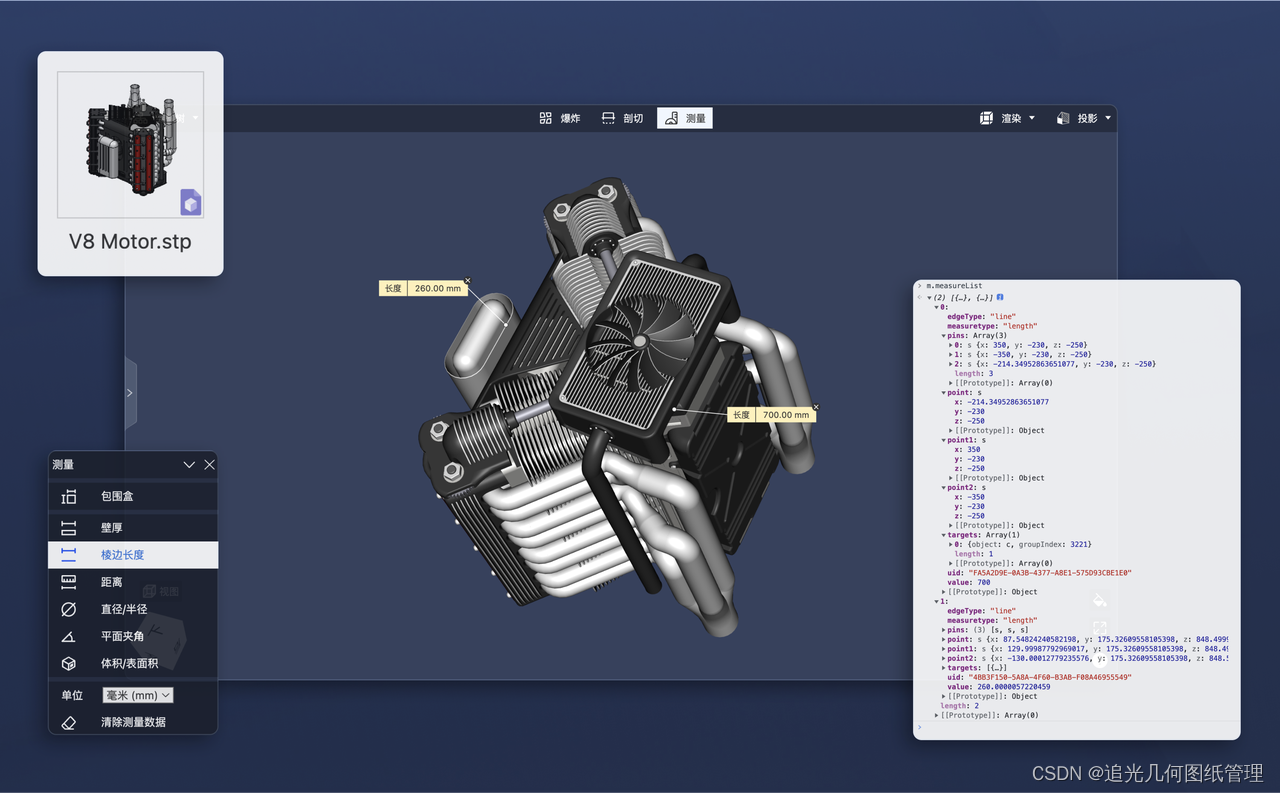作者: 大树先生
博客: http://blog.csdn.net/koala_tree
知乎:https://www.zhihu.com/people/dashuxiansheng
GitHub:https://github.com/MrLeeTree
2017 年 12 月 5 日
一直想在Kaggle上参加一次比赛,奈何被各种事情所拖累。为了熟悉一下比赛的流程和对数据建模有个较为直观的认识,断断续续用一段时间做了Kaggle上的入门比赛:Titanic: Machine Learning from Disaster。
总的来说收获还算是挺大的吧。本来想的是只简单的做一下,在整个进行的过程中发现有很多好的Kernels以及数据分析的流程和方法,但是却鲜有比较清晰直观的流程和较为全面的分析方法。所以,本着自己强迫症的精神,同时也算对这次小比赛的一些方式方法以及绘图分析技巧做一个较为系统的笔记,经过几天快要吐血的整理下,本文新鲜出炉。
本文参考了若干kernels以及博客知文,文章下方均有引用说明。
同时我在知乎上开设了关于机器学习深度学习的专栏收录下面的内容,以方便大家在移动端的学习。欢迎关注我的知乎:大树先生。一起学习一起进步呀!_
1. 数据总览
Titanic 生存模型预测,其中包含了两组数据:train.csv 和 test.csv,分别为训练集合和测试集合。
import re
import numpy as np
import pandas as pd
import matplotlib.pyplot as plt
import seaborn as snsimport warnings
warnings.filterwarnings('ignore')%matplotlib inline
观察前几行的源数据:
train_data = pd.read_csv('data/train.csv')
test_data = pd.read_csv('data/test.csv')sns.set_style('whitegrid')
train_data.head()
| PassengerId | Survived | Pclass | Name | Sex | Age | SibSp | Parch | Ticket | Fare | Cabin | Embarked | |
|---|---|---|---|---|---|---|---|---|---|---|---|---|
| 0 | 1 | 0 | 3 | Braund, Mr. Owen Harris | male | 22.0 | 1 | 0 | A/5 21171 | 7.2500 | NaN | S |
| 1 | 2 | 1 | 1 | Cumings, Mrs. John Bradley (Florence Briggs Th... | female | 38.0 | 1 | 0 | PC 17599 | 71.2833 | C85 | C |
| 2 | 3 | 1 | 3 | Heikkinen, Miss. Laina | female | 26.0 | 0 | 0 | STON/O2. 3101282 | 7.9250 | NaN | S |
| 3 | 4 | 1 | 1 | Futrelle, Mrs. Jacques Heath (Lily May Peel) | female | 35.0 | 1 | 0 | 113803 | 53.1000 | C123 | S |
| 4 | 5 | 0 | 3 | Allen, Mr. William Henry | male | 35.0 | 0 | 0 | 373450 | 8.0500 | NaN | S |
数据信息总览:
train_data.info()
print("-" * 40)
test_data.info()
<class 'pandas.core.frame.DataFrame'>
RangeIndex: 891 entries, 0 to 890
Data columns (total 12 columns):
PassengerId 891 non-null int64
Survived 891 non-null int64
Pclass 891 non-null int64
Name 891 non-null object
Sex 891 non-null object
Age 714 non-null float64
SibSp 891 non-null int64
Parch 891 non-null int64
Ticket 891 non-null object
Fare 891 non-null float64
Cabin 204 non-null object
Embarked 889 non-null object
dtypes: float64(2), int64(5), object(5)
memory usage: 83.6+ KB
----------------------------------------
<class 'pandas.core.frame.DataFrame'>
RangeIndex: 418 entries, 0 to 417
Data columns (total 11 columns):
PassengerId 418 non-null int64
Pclass 418 non-null int64
Name 418 non-null object
Sex 418 non-null object
Age 332 non-null float64
SibSp 418 non-null int64
Parch 418 non-null int64
Ticket 418 non-null object
Fare 417 non-null float64
Cabin 91 non-null object
Embarked 418 non-null object
dtypes: float64(2), int64(4), object(5)
memory usage: 36.0+ KB
从上面我们可以看出,Age、Cabin、Embarked、Fare几个特征存在缺失值。
绘制存活的比例:
train_data['Survived'].value_counts().plot.pie(autopct = '%1.2f%%')
<matplotlib.axes._subplots.AxesSubplot at 0x230c2508ef0>
2. 缺失值处理的方法
对数据进行分析的时候要注意其中是否有缺失值。
一些机器学习算法能够处理缺失值,比如神经网络,一些则不能。对于缺失值,一般有以下几种处理方法:
(1)如果数据集很多,但有很少的缺失值,可以删掉带缺失值的行;
(2)如果该属性相对学习来说不是很重要,可以对缺失值赋均值或者众数。比如在哪儿上船Embarked这一属性(共有三个上船地点),缺失俩值,可以用众数赋值
train_data.Embarked[train_data.Embarked.isnull()] = train_data.Embarked.dropna().mode().values
(3)对于标称属性,可以赋一个代表缺失的值,比如‘U0’。因为缺失本身也可能代表着一些隐含信息。比如船舱号Cabin这一属性,缺失可能代表并没有船舱。
#replace missing value with U0
train_data['Cabin'] = train_data.Cabin.fillna('U0') # train_data.Cabin[train_data.Cabin.isnull()]='U0'
(4)使用回归 随机森林等模型来预测缺失属性的值。因为Age在该数据集里是一个相当重要的特征(先对Age进行分析即可得知),所以保证一定的缺失值填充准确率是非常重要的,对结果也会产生较大影响。一般情况下,会使用数据完整的条目作为模型的训练集,以此来预测缺失值。对于当前的这个数据,可以使用随机森林来预测也可以使用线性回归预测。这里使用随机森林预测模型,选取数据集中的数值属性作为特征(因为sklearn的模型只能处理数值属性,所以这里先仅选取数值特征,但在实际的应用中需要将非数值特征转换为数值特征)
from sklearn.ensemble import RandomForestRegressor#choose training data to predict age
age_df = train_data[['Age','Survived','Fare', 'Parch', 'SibSp', 'Pclass']]
age_df_notnull = age_df.loc[(train_data['Age'].notnull())]
age_df_isnull = age_df.loc[(train_data['Age'].isnull())]
X = age_df_notnull.values[:,1:]
Y = age_df_notnull.values[:,0]
# use RandomForestRegression to train data
RFR = RandomForestRegressor(n_estimators=1000, n_jobs=-1)
RFR.fit(X,Y)
predictAges = RFR.predict(age_df_isnull.values[:,1:])
train_data.loc[train_data['Age'].isnull(), ['Age']]= predictAges
让我们再来看一下缺失数据处理后的DataFram:
train_data.info()
<class 'pandas.core.frame.DataFrame'>
RangeIndex: 891 entries, 0 to 890
Data columns (total 12 columns):
PassengerId 891 non-null int64
Survived 891 non-null int64
Pclass 891 non-null int64
Name 891 non-null object
Sex 891 non-null object
Age 891 non-null float64
SibSp 891 non-null int64
Parch 891 non-null int64
Ticket 891 non-null object
Fare 891 non-null float64
Cabin 891 non-null object
Embarked 891 non-null object
dtypes: float64(2), int64(5), object(5)
memory usage: 83.6+ KB
3. 分析数据关系
(1) 性别与是否生存的关系 Sex
train_data.groupby(['Sex','Survived'])['Survived'].count()
Sex Survived
female 0 811 233
male 0 4681 109
Name: Survived, dtype: int64
train_data[['Sex','Survived']].groupby(['Sex']).mean().plot.bar()
<matplotlib.axes._subplots.AxesSubplot at 0x230c251ab00>
以上为不同性别的生存率,可见在泰坦尼克号事故中,还是体现了Lady First。
(2) 船舱等级和生存与否的关系 Pclass
train_data.groupby(['Pclass','Survived'])['Pclass'].count()
Pclass Survived
1 0 801 136
2 0 971 87
3 0 3721 119
Name: Pclass, dtype: int64
train_data[['Pclass','Survived']].groupby(['Pclass']).mean().plot.bar()
<matplotlib.axes._subplots.AxesSubplot at 0x230c5e08b70>
train_data[['Sex','Pclass','Survived']].groupby(['Pclass','Sex']).mean().plot.bar()
<matplotlib.axes._subplots.AxesSubplot at 0x230c5e2ad68>
不同等级船舱的男女生存率:
train_data.groupby(['Sex', 'Pclass', 'Survived'])['Survived'].count()
Sex Pclass Survived
female 1 0 31 912 0 61 703 0 721 72
male 1 0 771 452 0 911 173 0 3001 47
Name: Survived, dtype: int64
从图和表中可以看出,总体上泰坦尼克号逃生是妇女优先,但是对于不同等级的船舱还是有一定的区别。
(3) 年龄与存活与否的关系 Age
分别分析不同等级船舱和不同性别下的年龄分布和生存的关系:
fig, ax = plt.subplots(1, 2, figsize = (18, 8))
sns.violinplot("Pclass", "Age", hue="Survived", data=train_data, split=True, ax=ax[0])
ax[0].set_title('Pclass and Age vs Survived')
ax[0].set_yticks(range(0, 110, 10))sns.violinplot("Sex", "Age", hue="Survived", data=train_data, split=True, ax=ax[1])
ax[1].set_title('Sex and Age vs Survived')
ax[1].set_yticks(range(0, 110, 10))plt.show()
分析总体的年龄分布:
plt.figure(figsize=(12,5))
plt.subplot(121)
train_data['Age'].hist(bins=70)
plt.xlabel('Age')
plt.ylabel('Num')plt.subplot(122)
train_data.boxplot(column='Age', showfliers=False)
plt.show()
不同年龄下的生存和非生存的分布情况:
facet = sns.FacetGrid(train_data, hue="Survived",aspect=4)
facet.map(sns.kdeplot,'Age',shade= True)
facet.set(xlim=(0, train_data['Age'].max()))
facet.add_legend()
<seaborn.axisgrid.FacetGrid at 0x230c5e53cf8>
不同年龄下的平均生存率:
# average survived passengers by age
fig, axis1 = plt.subplots(1,1,figsize=(18,4))
train_data["Age_int"] = train_data["Age"].astype(int)
average_age = train_data[["Age_int", "Survived"]].groupby(['Age_int'],as_index=False).mean()
sns.barplot(x='Age_int', y='Survived', data=average_age)
<matplotlib.axes._subplots.AxesSubplot at 0x230c60135f8>
train_data['Age'].describe()
count 891.000000
mean 29.668231
std 13.739002
min 0.420000
25% 21.000000
50% 28.000000
75% 37.000000
max 80.000000
Name: Age, dtype: float64
样本有891,平均年龄约为30岁,标准差13.5岁,最小年龄为0.42,最大年龄80.
按照年龄,将乘客划分为儿童、少年、成年和老年,分析四个群体的生还情况:
bins = [0, 12, 18, 65, 100]
train_data['Age_group'] = pd.cut(train_data['Age'], bins)
by_age = train_data.groupby('Age_group')['Survived'].mean()
by_age
Age_group
(0, 12] 0.506173
(12, 18] 0.466667
(18, 65] 0.364512
(65, 100] 0.125000
Name: Survived, dtype: float64
by_age.plot(kind = 'bar')
<matplotlib.axes._subplots.AxesSubplot at 0x230c6079e80>
(4) 称呼与存活与否的关系 Name
通过观察名字数据,我们可以看出其中包括对乘客的称呼,如:Mr、Miss、Mrs等,称呼信息包含了乘客的年龄、性别,同时也包含了如社会地位等的称呼,如:Dr,、Lady、Major、Master等的称呼。
train_data['Title'] = train_data['Name'].str.extract(' ([A-Za-z]+)\.', expand=False)pd.crosstab(train_data['Title'], train_data['Sex'])
| Sex | female | male |
|---|---|---|
| Title | ||
| Capt | 0 | 1 |
| Col | 0 | 2 |
| Countess | 1 | 0 |
| Don | 0 | 1 |
| Dr | 1 | 6 |
| Jonkheer | 0 | 1 |
| Lady | 1 | 0 |
| Major | 0 | 2 |
| Master | 0 | 40 |
| Miss | 182 | 0 |
| Mlle | 2 | 0 |
| Mme | 1 | 0 |
| Mr | 0 | 517 |
| Mrs | 125 | 0 |
| Ms | 1 | 0 |
| Rev | 0 | 6 |
| Sir | 0 | 1 |
观察不同称呼与生存率的关系:
train_data[['Title','Survived']].groupby(['Title']).mean().plot.bar()
<matplotlib.axes._subplots.AxesSubplot at 0x230c61699b0>
同时,对于名字,我们还可以观察名字长度和生存率之间存在关系的可能:
fig, axis1 = plt.subplots(1,1,figsize=(18,4))
train_data['Name_length'] = train_data['Name'].apply(len)
name_length = train_data[['Name_length','Survived']].groupby(['Name_length'],as_index=False).mean()
sns.barplot(x='Name_length', y='Survived', data=name_length)
<matplotlib.axes._subplots.AxesSubplot at 0x230c61689b0>
从上面的图片可以看出,名字长度和生存与否确实也存在一定的相关性。
(5) 有无兄弟姐妹和存活与否的关系 SibSp
# 将数据分为有兄弟姐妹的和没有兄弟姐妹的两组:
sibsp_df = train_data[train_data['SibSp'] != 0]
no_sibsp_df = train_data[train_data['SibSp'] == 0]
plt.figure(figsize=(10,5))
plt.subplot(121)
sibsp_df['Survived'].value_counts().plot.pie(labels=['No Survived', 'Survived'], autopct = '%1.1f%%')
plt.xlabel('sibsp')plt.subplot(122)
no_sibsp_df['Survived'].value_counts().plot.pie(labels=['No Survived', 'Survived'], autopct = '%1.1f%%')
plt.xlabel('no_sibsp')plt.show()
(6) 有无父母子女和存活与否的关系 Parch
和有无兄弟姐妹一样,同样分析可以得到:
parch_df = train_data[train_data['Parch'] != 0]
no_parch_df = train_data[train_data['Parch'] == 0]plt.figure(figsize=(10,5))
plt.subplot(121)
parch_df['Survived'].value_counts().plot.pie(labels=['No Survived', 'Survived'], autopct = '%1.1f%%')
plt.xlabel('parch')plt.subplot(122)
no_parch_df['Survived'].value_counts().plot.pie(labels=['No Survived', 'Survived'], autopct = '%1.1f%%')
plt.xlabel('no_parch')plt.show()
(7) 亲友的人数和存活与否的关系 SibSp & Parch
fig,ax=plt.subplots(1,2,figsize=(18,8))
train_data[['Parch','Survived']].groupby(['Parch']).mean().plot.bar(ax=ax[0])
ax[0].set_title('Parch and Survived')
train_data[['SibSp','Survived']].groupby(['SibSp']).mean().plot.bar(ax=ax[1])
ax[1].set_title('SibSp and Survived')
Text(0.5,1,'SibSp and Survived')
train_data['Family_Size'] = train_data['Parch'] + train_data['SibSp'] + 1
train_data[['Family_Size','Survived']].groupby(['Family_Size']).mean().plot.bar()
<matplotlib.axes._subplots.AxesSubplot at 0x230c77155c0>
从图表中可以看出,若独自一人,那么其存活率比较低;但是如果亲友太多的话,存活率也会很低。
(8) 票价分布和存活与否的关系 Fare
首先绘制票价的分布情况:
plt.figure(figsize=(10,5))
train_data['Fare'].hist(bins = 70)train_data.boxplot(column='Fare', by='Pclass', showfliers=False)
plt.show()
train_data['Fare'].describe()
count 891.000000
mean 32.204208
std 49.693429
min 0.000000
25% 7.910400
50% 14.454200
75% 31.000000
max 512.329200
Name: Fare, dtype: float64
绘制生存与否与票价均值和方差的关系:
fare_not_survived = train_data['Fare'][train_data['Survived'] == 0]
fare_survived = train_data['Fare'][train_data['Survived'] == 1]average_fare = pd.DataFrame([fare_not_survived.mean(), fare_survived.mean()])
std_fare = pd.DataFrame([fare_not_survived.std(), fare_survived.std()])
average_fare.plot(yerr=std_fare, kind='bar', legend=False)plt.show()
由上图标可知,票价与是否生还有一定的相关性,生还者的平均票价要大于未生还者的平均票价。
(9) 船舱类型和存活与否的关系 Cabin
由于船舱的缺失值确实太多,有效值仅仅有204个,很难分析出不同的船舱和存活的关系,所以在做特征工程的时候,可以直接将该组特征丢弃。
当然,这里我们也可以对其进行一下分析,对于缺失的数据都分为一类。
简单地将数据分为是否有Cabin记录作为特征,与生存与否进行分析:
# Replace missing values with "U0"
train_data.loc[train_data.Cabin.isnull(), 'Cabin'] = 'U0'
train_data['Has_Cabin'] = train_data['Cabin'].apply(lambda x: 0 if x == 'U0' else 1)
train_data[['Has_Cabin','Survived']].groupby(['Has_Cabin']).mean().plot.bar()
<matplotlib.axes._subplots.AxesSubplot at 0x230c7566080>
对不同类型的船舱进行分析:
# create feature for the alphabetical part of the cabin number
train_data['CabinLetter'] = train_data['Cabin'].map(lambda x: re.compile("([a-zA-Z]+)").search(x).group())
# convert the distinct cabin letters with incremental integer values
train_data['CabinLetter'] = pd.factorize(train_data['CabinLetter'])[0]
train_data[['CabinLetter','Survived']].groupby(['CabinLetter']).mean().plot.bar()
<matplotlib.axes._subplots.AxesSubplot at 0x230c5ebcd30>
可见,不同的船舱生存率也有不同,但是差别不大。所以在处理中,我们可以直接将特征删除。
(10) 港口和存活与否的关系 Embarked
泰坦尼克号从英国的南安普顿港出发,途径法国瑟堡和爱尔兰昆士敦,那么在昆士敦之前上船的人,有可能在瑟堡或昆士敦下船,这些人将不会遇到海难。
sns.countplot('Embarked', hue='Survived', data=train_data)
plt.title('Embarked and Survived')
Text(0.5,1,'Embarked and Survived')
sns.factorplot('Embarked', 'Survived', data=train_data, size=3, aspect=2)
plt.title('Embarked and Survived rate')
plt.show()
由上可以看出,在不同的港口上船,生还率不同,C最高,Q次之,S最低。
以上为所给出的数据特征与生还与否的分析。
据了解,泰坦尼克号上共有2224名乘客。本训练数据只给出了891名乘客的信息,如果该数据集是从总共的2224人中随机选出的,根据中心极限定理,该样本的数据也足够大,那么我们的分析结果就具有代表性;但如果不是随机选取,那么我们的分析结果就可能不太靠谱了。
(11) 其他可能和存活与否有关系的特征
对于数据集中没有给出的特征信息,我们还可以联想其他可能会对模型产生影响的特征因素。如:乘客的国籍、乘客的身高、乘客的体重、乘客是否会游泳、乘客职业等等。
另外还有数据集中没有分析的几个特征:Ticket(船票号)、Cabin(船舱号),这些因素的不同可能会影响乘客在船中的位置从而影响逃生的顺序。但是船舱号数据缺失,船票号类别大,难以分析规律,所以在后期模型融合的时候,将这些因素交由模型来决定其重要性。
4. 变量转换
变量转换的目的是将数据转换为适用于模型使用的数据,不同模型接受不同类型的数据,Scikit-learn要求数据都是数字型numeric,所以我们要将一些非数字型的原始数据转换为数字型numeric。
所以下面对数据的转换进行介绍,以在进行特征工程的时候使用。
所有的数据可以分为两类:
- 1.定量(Quantitative)变量可以以某种方式排序,Age就是一个很好的列子。
- 2.定性(Qualitative)变量描述了物体的某一(不能被数学表示的)方面,Embarked就是一个例子。
定性(Qualitative)转换:
1. Dummy Variables
就是类别变量或者二元变量,当qualitative variable是一些频繁出现的几个独立变量时,Dummy Variables比较适合使用。我们以Embarked为例,Embarked只包含三个值’S’,‘C’,‘Q’,我们可以使用下面的代码将其转换为dummies:
embark_dummies = pd.get_dummies(train_data['Embarked'])
train_data = train_data.join(embark_dummies)
train_data.drop(['Embarked'], axis=1,inplace=True)
embark_dummies = train_data[['S', 'C', 'Q']]
embark_dummies.head()
| S | C | Q | |
|---|---|---|---|
| 0 | 1 | 0 | 0 |
| 1 | 0 | 1 | 0 |
| 2 | 1 | 0 | 0 |
| 3 | 1 | 0 | 0 |
| 4 | 1 | 0 | 0 |
2. Factorizing
dummy不好处理Cabin(船舱号)这种标称属性,因为他出现的变量比较多。所以Pandas有一个方法叫做factorize(),它可以创建一些数字,来表示类别变量,对每一个类别映射一个ID,这种映射最后只生成一个特征,不像dummy那样生成多个特征。
# Replace missing values with "U0"
train_data['Cabin'][train_data.Cabin.isnull()] = 'U0'
# create feature for the alphabetical part of the cabin number
train_data['CabinLetter'] = train_data['Cabin'].map( lambda x : re.compile("([a-zA-Z]+)").search(x).group())
# convert the distinct cabin letters with incremental integer values
train_data['CabinLetter'] = pd.factorize(train_data['CabinLetter'])[0]
train_data['CabinLetter'].head()
0 0
1 1
2 0
3 1
4 0
Name: CabinLetter, dtype: int64
定量(Quantitative)转换:
1. Scaling
Scaling可以将一个很大范围的数值映射到一个很小的范围(通常是-1 - 1,或则是0 - 1),很多情况下我们需要将数值做Scaling使其范围大小一样,否则大范围数值特征将会由更高的权重。比如:Age的范围可能只是0-100,而income的范围可能是0-10000000,在某些对数组大小敏感的模型中会影响其结果。
下面对Age进行Scaling:
from sklearn import preprocessingassert np.size(train_data['Age']) == 891
# StandardScaler will subtract the mean from each value then scale to the unit variance
scaler = preprocessing.StandardScaler()
train_data['Age_scaled'] = scaler.fit_transform(train_data['Age'].values.reshape(-1, 1))
train_data['Age_scaled'].head()
0 -0.558449
1 0.606773
2 -0.267144
3 0.388293
4 0.388293
Name: Age_scaled, dtype: float64
2. Binning
Binning通过观察“邻居”(即周围的值)将连续数据离散化。存储的值被分布到一些“桶”或“箱“”中,就像直方图的bin将数据划分成几块一样。下面的代码对Fare进行Binning。
# Divide all fares into quartiles
train_data['Fare_bin'] = pd.qcut(train_data['Fare'], 5)
train_data['Fare_bin'].head()
0 (-0.001, 7.854]
1 (39.688, 512.329]
2 (7.854, 10.5]
3 (39.688, 512.329]
4 (7.854, 10.5]
Name: Fare_bin, dtype: category
Categories (5, interval[float64]): [(-0.001, 7.854] < (7.854, 10.5] < (10.5, 21.679] < (21.679, 39.688] < (39.688, 512.329]]
在将数据Bining化后,要么将数据factorize化,要么dummies化。
# qcut() creates a new variable that identifies the quartile range, but we can't use the string
# so either factorize or create dummies from the result# factorize
train_data['Fare_bin_id'] = pd.factorize(train_data['Fare_bin'])[0]# dummies
fare_bin_dummies_df = pd.get_dummies(train_data['Fare_bin']).rename(columns=lambda x: 'Fare_' + str(x))
train_data = pd.concat([train_data, fare_bin_dummies_df], axis=1)
5. 特征工程
在进行特征工程的时候,我们不仅需要对训练数据进行处理,还需要同时将测试数据同训练数据一起处理,使得二者具有相同的数据类型和数据分布。
train_df_org = pd.read_csv('data/train.csv')
test_df_org = pd.read_csv('data/test.csv')
test_df_org['Survived'] = 0
combined_train_test = train_df_org.append(test_df_org)
PassengerId = test_df_org['PassengerId']
对数据进行特征工程,也就是从各项参数中提取出对输出结果有或大或小的影响的特征,将这些特征作为训练模型的依据。
一般来说,我们会先从含有缺失值的特征开始。
(1) Embarked
因为“Embarked”项的缺失值不多,所以这里我们以众数来填充:
combined_train_test['Embarked'].fillna(combined_train_test['Embarked'].mode().iloc[0], inplace=True)
对于三种不同的港口,由上面介绍的数值转换,我们知道可以有两种特征处理方式:dummy和facrorizing。因为只有三个港口,所以我们可以直接用dummy来处理:
# 为了后面的特征分析,这里我们将 Embarked 特征进行facrorizing
combined_train_test['Embarked'] = pd.factorize(combined_train_test['Embarked'])[0]# 使用 pd.get_dummies 获取one-hot 编码
emb_dummies_df = pd.get_dummies(combined_train_test['Embarked'], prefix=combined_train_test[['Embarked']].columns[0])
combined_train_test = pd.concat([combined_train_test, emb_dummies_df], axis=1)
(2) Sex
对Sex也进行one-hot编码,也就是dummy处理:
# 为了后面的特征分析,这里我们也将 Sex 特征进行facrorizing
combined_train_test['Sex'] = pd.factorize(combined_train_test['Sex'])[0]sex_dummies_df = pd.get_dummies(combined_train_test['Sex'], prefix=combined_train_test[['Sex']].columns[0])
combined_train_test = pd.concat([combined_train_test, sex_dummies_df], axis=1)
(3) Name
首先先从名字中提取各种称呼:
# what is each person's title?
combined_train_test['Title'] = combined_train_test['Name'].map(lambda x: re.compile(", (.*?)\.").findall(x)[0])
将各式称呼进行统一化处理:
title_Dict = {}
title_Dict.update(dict.fromkeys(['Capt', 'Col', 'Major', 'Dr', 'Rev'], 'Officer'))
title_Dict.update(dict.fromkeys(['Don', 'Sir', 'the Countess', 'Dona', 'Lady'], 'Royalty'))
title_Dict.update(dict.fromkeys(['Mme', 'Ms', 'Mrs'], 'Mrs'))
title_Dict.update(dict.fromkeys(['Mlle', 'Miss'], 'Miss'))
title_Dict.update(dict.fromkeys(['Mr'], 'Mr'))
title_Dict.update(dict.fromkeys(['Master','Jonkheer'], 'Master'))combined_train_test['Title'] = combined_train_test['Title'].map(title_Dict)
使用dummy对不同的称呼进行分列:
# 为了后面的特征分析,这里我们也将 Title 特征进行facrorizing
combined_train_test['Title'] = pd.factorize(combined_train_test['Title'])[0]title_dummies_df = pd.get_dummies(combined_train_test['Title'], prefix=combined_train_test[['Title']].columns[0])
combined_train_test = pd.concat([combined_train_test, title_dummies_df], axis=1)
增加名字长度的特征:
combined_train_test['Name_length'] = combined_train_test['Name'].apply(len)
(4) Fare
由前面分析可以知道,Fare项在测试数据中缺少一个值,所以需要对该值进行填充。
我们按照一二三等舱各自的均价来填充:
下面transform将函数np.mean应用到各个group中。
combined_train_test['Fare'] = combined_train_test[['Fare']].fillna(combined_train_test.groupby('Pclass').transform(np.mean))
通过对Ticket数据的分析,我们可以看到部分票号数据有重复,同时结合亲属人数及名字的数据,和票价船舱等级对比,我们可以知道购买的票中有家庭票和团体票,所以我们需要将团体票的票价分配到每个人的头上。
combined_train_test['Group_Ticket'] = combined_train_test['Fare'].groupby(by=combined_train_test['Ticket']).transform('count')
combined_train_test['Fare'] = combined_train_test['Fare'] / combined_train_test['Group_Ticket']
combined_train_test.drop(['Group_Ticket'], axis=1, inplace=True)
使用binning给票价分等级:
combined_train_test['Fare_bin'] = pd.qcut(combined_train_test['Fare'], 5)
对于5个等级的票价我们也可以继续使用dummy为票价等级分列:
combined_train_test['Fare_bin_id'] = pd.factorize(combined_train_test['Fare_bin'])[0]fare_bin_dummies_df = pd.get_dummies(combined_train_test['Fare_bin_id']).rename(columns=lambda x: 'Fare_' + str(x))
combined_train_test = pd.concat([combined_train_test, fare_bin_dummies_df], axis=1)
combined_train_test.drop(['Fare_bin'], axis=1, inplace=True)
(5) Pclass
Pclass这一项,其实已经可以不用继续处理了,我们只需要将其转换为dummy形式即可。
但是为了更好的分析问题,我们这里假设对于不同等级的船舱,各船舱内部的票价也说明了各等级舱的位置,那么也就很有可能与逃生的顺序有关系。所以这里分出每等舱里的高价和低价位。
from sklearn.preprocessing import LabelEncoder# 建立PClass Fare Category
def pclass_fare_category(df, pclass1_mean_fare, pclass2_mean_fare, pclass3_mean_fare):if df['Pclass'] == 1:if df['Fare'] <= pclass1_mean_fare:return 'Pclass1_Low'else:return 'Pclass1_High'elif df['Pclass'] == 2:if df['Fare'] <= pclass2_mean_fare:return 'Pclass2_Low'else:return 'Pclass2_High'elif df['Pclass'] == 3:if df['Fare'] <= pclass3_mean_fare:return 'Pclass3_Low'else:return 'Pclass3_High'Pclass1_mean_fare = combined_train_test['Fare'].groupby(by=combined_train_test['Pclass']).mean().get([1]).values[0]
Pclass2_mean_fare = combined_train_test['Fare'].groupby(by=combined_train_test['Pclass']).mean().get([2]).values[0]
Pclass3_mean_fare = combined_train_test['Fare'].groupby(by=combined_train_test['Pclass']).mean().get([3]).values[0]# 建立Pclass_Fare Category
combined_train_test['Pclass_Fare_Category'] = combined_train_test.apply(pclass_fare_category, args=(Pclass1_mean_fare, Pclass2_mean_fare, Pclass3_mean_fare), axis=1)
pclass_level = LabelEncoder()# 给每一项添加标签
pclass_level.fit(np.array(['Pclass1_Low', 'Pclass1_High', 'Pclass2_Low', 'Pclass2_High', 'Pclass3_Low', 'Pclass3_High']))# 转换成数值
combined_train_test['Pclass_Fare_Category'] = pclass_level.transform(combined_train_test['Pclass_Fare_Category'])# dummy 转换
pclass_dummies_df = pd.get_dummies(combined_train_test['Pclass_Fare_Category']).rename(columns=lambda x: 'Pclass_' + str(x))
combined_train_test = pd.concat([combined_train_test, pclass_dummies_df], axis=1)
同时,我们将 Pclass 特征factorize化:
combined_train_test['Pclass'] = pd.factorize(combined_train_test['Pclass'])[0]
(6) Parch and SibSp
由前面的分析,我们可以知道,亲友的数量没有或者太多会影响到Survived。所以将二者合并为FamliySize这一组合项,同时也保留这两项。
def family_size_category(family_size):if family_size <= 1:return 'Single'elif family_size <= 4:return 'Small_Family'else:return 'Large_Family'combined_train_test['Family_Size'] = combined_train_test['Parch'] + combined_train_test['SibSp'] + 1
combined_train_test['Family_Size_Category'] = combined_train_test['Family_Size'].map(family_size_category)le_family = LabelEncoder()
le_family.fit(np.array(['Single', 'Small_Family', 'Large_Family']))
combined_train_test['Family_Size_Category'] = le_family.transform(combined_train_test['Family_Size_Category'])family_size_dummies_df = pd.get_dummies(combined_train_test['Family_Size_Category'],prefix=combined_train_test[['Family_Size_Category']].columns[0])
combined_train_test = pd.concat([combined_train_test, family_size_dummies_df], axis=1)
(7) Age
因为Age项的缺失值较多,所以不能直接填充age的众数或者平均数。
常见的有两种对年龄的填充方式:一种是根据Title中的称呼,如Mr,Master、Miss等称呼不同类别的人的平均年龄来填充;一种是综合几项如Sex、Title、Pclass等其他没有缺失值的项,使用机器学习算法来预测Age。
这里我们使用后者来处理。以Age为目标值,将Age完整的项作为训练集,将Age缺失的项作为测试集。
missing_age_df = pd.DataFrame(combined_train_test[['Age', 'Embarked', 'Sex', 'Title', 'Name_length', 'Family_Size', 'Family_Size_Category','Fare', 'Fare_bin_id', 'Pclass']])missing_age_train = missing_age_df[missing_age_df['Age'].notnull()]
missing_age_test = missing_age_df[missing_age_df['Age'].isnull()]
missing_age_test.head()
| Age | Embarked | Sex | Title | Name_length | Family_Size | Family_Size_Category | Fare | Fare_bin_id | Pclass | |
|---|---|---|---|---|---|---|---|---|---|---|
| 5 | NaN | 2 | 0 | 0 | 16 | 1 | 1 | 8.4583 | 2 | 0 |
| 17 | NaN | 0 | 0 | 0 | 28 | 1 | 1 | 13.0000 | 3 | 2 |
| 19 | NaN | 1 | 1 | 1 | 23 | 1 | 1 | 7.2250 | 4 | 0 |
| 26 | NaN | 1 | 0 | 0 | 23 | 1 | 1 | 7.2250 | 4 | 0 |
| 28 | NaN | 2 | 1 | 2 | 29 | 1 | 1 | 7.8792 | 0 | 0 |
建立Age的预测模型,我们可以多模型预测,然后再做模型的融合,提高预测的精度。
from sklearn import ensemble
from sklearn import model_selection
from sklearn.ensemble import GradientBoostingRegressor
from sklearn.ensemble import RandomForestRegressordef fill_missing_age(missing_age_train, missing_age_test):missing_age_X_train = missing_age_train.drop(['Age'], axis=1)missing_age_Y_train = missing_age_train['Age']missing_age_X_test = missing_age_test.drop(['Age'], axis=1)# model 1 gbmgbm_reg = GradientBoostingRegressor(random_state=42)gbm_reg_param_grid = {'n_estimators': [2000], 'max_depth': [4], 'learning_rate': [0.01], 'max_features': [3]}gbm_reg_grid = model_selection.GridSearchCV(gbm_reg, gbm_reg_param_grid, cv=10, n_jobs=25, verbose=1, scoring='neg_mean_squared_error')gbm_reg_grid.fit(missing_age_X_train, missing_age_Y_train)print('Age feature Best GB Params:' + str(gbm_reg_grid.best_params_))print('Age feature Best GB Score:' + str(gbm_reg_grid.best_score_))print('GB Train Error for "Age" Feature Regressor:' + str(gbm_reg_grid.score(missing_age_X_train, missing_age_Y_train)))missing_age_test.loc[:, 'Age_GB'] = gbm_reg_grid.predict(missing_age_X_test)print(missing_age_test['Age_GB'][:4])# model 2 rfrf_reg = RandomForestRegressor()rf_reg_param_grid = {'n_estimators': [200], 'max_depth': [5], 'random_state': [0]}rf_reg_grid = model_selection.GridSearchCV(rf_reg, rf_reg_param_grid, cv=10, n_jobs=25, verbose=1, scoring='neg_mean_squared_error')rf_reg_grid.fit(missing_age_X_train, missing_age_Y_train)print('Age feature Best RF Params:' + str(rf_reg_grid.best_params_))print('Age feature Best RF Score:' + str(rf_reg_grid.best_score_))print('RF Train Error for "Age" Feature Regressor' + str(rf_reg_grid.score(missing_age_X_train, missing_age_Y_train)))missing_age_test.loc[:, 'Age_RF'] = rf_reg_grid.predict(missing_age_X_test)print(missing_age_test['Age_RF'][:4])# two models mergeprint('shape1', missing_age_test['Age'].shape, missing_age_test[['Age_GB', 'Age_RF']].mode(axis=1).shape)# missing_age_test['Age'] = missing_age_test[['Age_GB', 'Age_LR']].mode(axis=1)missing_age_test.loc[:, 'Age'] = np.mean([missing_age_test['Age_GB'], missing_age_test['Age_RF']])print(missing_age_test['Age'][:4])missing_age_test.drop(['Age_GB', 'Age_RF'], axis=1, inplace=True)return missing_age_test
利用融合模型预测的结果填充Age的缺失值:
combined_train_test.loc[(combined_train_test.Age.isnull()), 'Age'] = fill_missing_age(missing_age_train, missing_age_test)
Fitting 10 folds for each of 1 candidates, totalling 10 fits[Parallel(n_jobs=25)]: Done 5 out of 10 | elapsed: 3.9s remaining: 3.9s
[Parallel(n_jobs=25)]: Done 10 out of 10 | elapsed: 6.9s finishedAge feature Best GB Params:{'n_estimators': 2000, 'learning_rate': 0.01, 'max_features': 3, 'max_depth': 4}
Age feature Best GB Score:-130.295677599
GB Train Error for "Age" Feature Regressor:-64.6566961723
5 35.773942
17 31.489153
19 34.113840
26 28.621281
Name: Age_GB, dtype: float64
Fitting 10 folds for each of 1 candidates, totalling 10 fits[Parallel(n_jobs=25)]: Done 5 out of 10 | elapsed: 6.2s remaining: 6.2s
[Parallel(n_jobs=25)]: Done 10 out of 10 | elapsed: 10.7s finishedAge feature Best RF Params:{'n_estimators': 200, 'random_state': 0, 'max_depth': 5}
Age feature Best RF Score:-119.094956052
RF Train Error for "Age" Feature Regressor-96.0603148448
5 33.459421
17 33.076798
19 34.855942
26 28.146718
Name: Age_RF, dtype: float64
shape1 (263,) (263, 2)
5 30.000675
17 30.000675
19 30.000675
26 30.000675
Name: Age, dtype: float64
(8) Ticket
观察Ticket的值,我们可以看到,Ticket有字母和数字之分,而对于不同的字母,可能在很大程度上就意味着船舱等级或者不同船舱的位置,也会对Survived产生一定的影响,所以我们将Ticket中的字母分开,为数字的部分则分为一类。
combined_train_test['Ticket_Letter'] = combined_train_test['Ticket'].str.split().str[0]
combined_train_test['Ticket_Letter'] = combined_train_test['Ticket_Letter'].apply(lambda x: 'U0' if x.isnumeric() else x)# 如果要提取数字信息,则也可以这样做,现在我们对数字票单纯地分为一类。
# combined_train_test['Ticket_Number'] = combined_train_test['Ticket'].apply(lambda x: pd.to_numeric(x, errors='coerce'))
# combined_train_test['Ticket_Number'].fillna(0, inplace=True)# 将 Ticket_Letter factorize
combined_train_test['Ticket_Letter'] = pd.factorize(combined_train_test['Ticket_Letter'])[0]
(9) Cabin
因为Cabin项的缺失值确实太多了,我们很难对其进行分析,或者预测。所以这里我们可以直接将Cabin这一项特征去除。但通过上面的分析,可以知道,该特征信息的有无也与生存率有一定的关系,所以这里我们暂时保留该特征,并将其分为有和无两类。
combined_train_test.loc[combined_train_test.Cabin.isnull(), 'Cabin'] = 'U0'
combined_train_test['Cabin'] = combined_train_test['Cabin'].apply(lambda x: 0 if x == 'U0' else 1)
特征间相关性分析
我们挑选一些主要的特征,生成特征之间的关联图,查看特征与特征之间的相关性:
Correlation = pd.DataFrame(combined_train_test[['Embarked', 'Sex', 'Title', 'Name_length', 'Family_Size', 'Family_Size_Category','Fare', 'Fare_bin_id', 'Pclass', 'Pclass_Fare_Category', 'Age', 'Ticket_Letter', 'Cabin']])
colormap = plt.cm.viridis
plt.figure(figsize=(14,12))
plt.title('Pearson Correlation of Features', y=1.05, size=15)
sns.heatmap(Correlation.astype(float).corr(),linewidths=0.1,vmax=1.0, square=True, cmap=colormap, linecolor='white', annot=True)
<matplotlib.axes._subplots.AxesSubplot at 0x230c7995208>
特征之间的数据分布图
g = sns.pairplot(combined_train_test[[u'Survived', u'Pclass', u'Sex', u'Age', u'Fare', u'Embarked',u'Family_Size', u'Title', u'Ticket_Letter']], hue='Survived', palette = 'seismic',size=1.2,diag_kind = 'kde',diag_kws=dict(shade=True),plot_kws=dict(s=10) )
g.set(xticklabels=[])
<seaborn.axisgrid.PairGrid at 0x230c62a84a8>
输入模型前的一些处理:
1. 一些数据的正则化
这里我们将Age和fare进行正则化:
scale_age_fare = preprocessing.StandardScaler().fit(combined_train_test[['Age','Fare', 'Name_length']])
combined_train_test[['Age','Fare', 'Name_length']] = scale_age_fare.transform(combined_train_test[['Age','Fare', 'Name_length']])
2. 弃掉无用特征
对于上面的特征工程中,我们从一些原始的特征中提取出了很多要融合到模型中的特征,但是我们需要剔除那些原本的我们用不到的或者非数值特征:
首先对我们的数据先进行一下备份,以便后期的再次分析:
combined_data_backup = combined_train_test
combined_train_test.drop(['PassengerId', 'Embarked', 'Sex', 'Name', 'Title', 'Fare_bin_id', 'Pclass_Fare_Category', 'Parch', 'SibSp', 'Family_Size_Category', 'Ticket'],axis=1,inplace=True)
3. 将训练数据和测试数据分开:
train_data = combined_train_test[:891]
test_data = combined_train_test[891:]titanic_train_data_X = train_data.drop(['Survived'],axis=1)
titanic_train_data_Y = train_data['Survived']
titanic_test_data_X = test_data.drop(['Survived'],axis=1)
titanic_train_data_X.shape
(891, 32)
6. 模型融合及测试
模型融合的过程需要分几步来进行。
(1) 利用不同的模型来对特征进行筛选,选出较为重要的特征:
from sklearn.ensemble import RandomForestClassifier
from sklearn.ensemble import AdaBoostClassifier
from sklearn.ensemble import ExtraTreesClassifier
from sklearn.ensemble import GradientBoostingClassifier
from sklearn.tree import DecisionTreeClassifierdef get_top_n_features(titanic_train_data_X, titanic_train_data_Y, top_n_features):# random forestrf_est = RandomForestClassifier(random_state=0)rf_param_grid = {'n_estimators': [500], 'min_samples_split': [2, 3], 'max_depth': [20]}rf_grid = model_selection.GridSearchCV(rf_est, rf_param_grid, n_jobs=25, cv=10, verbose=1)rf_grid.fit(titanic_train_data_X, titanic_train_data_Y)print('Top N Features Best RF Params:' + str(rf_grid.best_params_))print('Top N Features Best RF Score:' + str(rf_grid.best_score_))print('Top N Features RF Train Score:' + str(rf_grid.score(titanic_train_data_X, titanic_train_data_Y)))feature_imp_sorted_rf = pd.DataFrame({'feature': list(titanic_train_data_X),'importance': rf_grid.best_estimator_.feature_importances_}).sort_values('importance', ascending=False)features_top_n_rf = feature_imp_sorted_rf.head(top_n_features)['feature']print('Sample 10 Features from RF Classifier')print(str(features_top_n_rf[:10]))# AdaBoostada_est =AdaBoostClassifier(random_state=0)ada_param_grid = {'n_estimators': [500], 'learning_rate': [0.01, 0.1]}ada_grid = model_selection.GridSearchCV(ada_est, ada_param_grid, n_jobs=25, cv=10, verbose=1)ada_grid.fit(titanic_train_data_X, titanic_train_data_Y)print('Top N Features Best Ada Params:' + str(ada_grid.best_params_))print('Top N Features Best Ada Score:' + str(ada_grid.best_score_))print('Top N Features Ada Train Score:' + str(ada_grid.score(titanic_train_data_X, titanic_train_data_Y)))feature_imp_sorted_ada = pd.DataFrame({'feature': list(titanic_train_data_X),'importance': ada_grid.best_estimator_.feature_importances_}).sort_values('importance', ascending=False)features_top_n_ada = feature_imp_sorted_ada.head(top_n_features)['feature']print('Sample 10 Feature from Ada Classifier:')print(str(features_top_n_ada[:10]))# ExtraTreeet_est = ExtraTreesClassifier(random_state=0)et_param_grid = {'n_estimators': [500], 'min_samples_split': [3, 4], 'max_depth': [20]}et_grid = model_selection.GridSearchCV(et_est, et_param_grid, n_jobs=25, cv=10, verbose=1)et_grid.fit(titanic_train_data_X, titanic_train_data_Y)print('Top N Features Best ET Params:' + str(et_grid.best_params_))print('Top N Features Best ET Score:' + str(et_grid.best_score_))print('Top N Features ET Train Score:' + str(et_grid.score(titanic_train_data_X, titanic_train_data_Y)))feature_imp_sorted_et = pd.DataFrame({'feature': list(titanic_train_data_X),'importance': et_grid.best_estimator_.feature_importances_}).sort_values('importance', ascending=False)features_top_n_et = feature_imp_sorted_et.head(top_n_features)['feature']print('Sample 10 Features from ET Classifier:')print(str(features_top_n_et[:10]))# GradientBoostinggb_est =GradientBoostingClassifier(random_state=0)gb_param_grid = {'n_estimators': [500], 'learning_rate': [0.01, 0.1], 'max_depth': [20]}gb_grid = model_selection.GridSearchCV(gb_est, gb_param_grid, n_jobs=25, cv=10, verbose=1)gb_grid.fit(titanic_train_data_X, titanic_train_data_Y)print('Top N Features Best GB Params:' + str(gb_grid.best_params_))print('Top N Features Best GB Score:' + str(gb_grid.best_score_))print('Top N Features GB Train Score:' + str(gb_grid.score(titanic_train_data_X, titanic_train_data_Y)))feature_imp_sorted_gb = pd.DataFrame({'feature': list(titanic_train_data_X),'importance': gb_grid.best_estimator_.feature_importances_}).sort_values('importance', ascending=False)features_top_n_gb = feature_imp_sorted_gb.head(top_n_features)['feature']print('Sample 10 Feature from GB Classifier:')print(str(features_top_n_gb[:10]))# DecisionTreedt_est = DecisionTreeClassifier(random_state=0)dt_param_grid = {'min_samples_split': [2, 4], 'max_depth': [20]}dt_grid = model_selection.GridSearchCV(dt_est, dt_param_grid, n_jobs=25, cv=10, verbose=1)dt_grid.fit(titanic_train_data_X, titanic_train_data_Y)print('Top N Features Best DT Params:' + str(dt_grid.best_params_))print('Top N Features Best DT Score:' + str(dt_grid.best_score_))print('Top N Features DT Train Score:' + str(dt_grid.score(titanic_train_data_X, titanic_train_data_Y)))feature_imp_sorted_dt = pd.DataFrame({'feature': list(titanic_train_data_X),'importance': dt_grid.best_estimator_.feature_importances_}).sort_values('importance', ascending=False)features_top_n_dt = feature_imp_sorted_dt.head(top_n_features)['feature']print('Sample 10 Features from DT Classifier:')print(str(features_top_n_dt[:10]))# merge the three modelsfeatures_top_n = pd.concat([features_top_n_rf, features_top_n_ada, features_top_n_et, features_top_n_gb, features_top_n_dt], ignore_index=True).drop_duplicates()features_importance = pd.concat([feature_imp_sorted_rf, feature_imp_sorted_ada, feature_imp_sorted_et, feature_imp_sorted_gb, feature_imp_sorted_dt],ignore_index=True)return features_top_n , features_importance
(2) 依据我们筛选出的特征构建训练集和测试集
但如果在进行特征工程的过程中,产生了大量的特征,而特征与特征之间会存在一定的相关性。太多的特征一方面会影响模型训练的速度,另一方面也可能会使得模型过拟合。所以在特征太多的情况下,我们可以利用不同的模型对特征进行筛选,选取出我们想要的前n个特征。
feature_to_pick = 30
feature_top_n, feature_importance = get_top_n_features(titanic_train_data_X, titanic_train_data_Y, feature_to_pick)
titanic_train_data_X = pd.DataFrame(titanic_train_data_X[feature_top_n])
titanic_test_data_X = pd.DataFrame(titanic_test_data_X[feature_top_n])
Fitting 10 folds for each of 2 candidates, totalling 20 fits[Parallel(n_jobs=25)]: Done 13 out of 20 | elapsed: 13.7s remaining: 7.3s
[Parallel(n_jobs=25)]: Done 20 out of 20 | elapsed: 19.2s finishedTop N Features Best RF Params:{'n_estimators': 500, 'min_samples_split': 3, 'max_depth': 20}
Top N Features Best RF Score:0.822671156004
Top N Features RF Train Score:0.979797979798
Sample 10 Features from RF Classifier
15 Name_length
0 Age
2 Fare
7 Sex_0
9 Title_0
8 Sex_1
27 Family_Size
3 Pclass
31 Ticket_Letter
11 Title_2
Name: feature, dtype: object
Fitting 10 folds for each of 2 candidates, totalling 20 fits[Parallel(n_jobs=25)]: Done 13 out of 20 | elapsed: 10.3s remaining: 5.5s
[Parallel(n_jobs=25)]: Done 20 out of 20 | elapsed: 14.9s finishedTop N Features Best Ada Params:{'n_estimators': 500, 'learning_rate': 0.01}
Top N Features Best Ada Score:0.81593714927
Top N Features Ada Train Score:0.820426487093
Sample 10 Feature from Ada Classifier:
9 Title_0
2 Fare
27 Family_Size
7 Sex_0
3 Pclass
28 Family_Size_Category_0
1 Cabin
8 Sex_1
15 Name_length
0 Age
Name: feature, dtype: object
Fitting 10 folds for each of 2 candidates, totalling 20 fits[Parallel(n_jobs=25)]: Done 13 out of 20 | elapsed: 9.8s remaining: 5.3s
[Parallel(n_jobs=25)]: Done 20 out of 20 | elapsed: 14.2s finishedTop N Features Best ET Params:{'n_estimators': 500, 'min_samples_split': 4, 'max_depth': 20}
Top N Features Best ET Score:0.828282828283
Top N Features ET Train Score:0.971941638608
Sample 10 Features from ET Classifier:
9 Title_0
8 Sex_1
7 Sex_0
15 Name_length
0 Age
2 Fare
1 Cabin
31 Ticket_Letter
11 Title_2
10 Title_1
Name: feature, dtype: object
Fitting 10 folds for each of 2 candidates, totalling 20 fits[Parallel(n_jobs=25)]: Done 13 out of 20 | elapsed: 25.9s remaining: 13.9s
[Parallel(n_jobs=25)]: Done 20 out of 20 | elapsed: 27.9s finishedTop N Features Best GB Params:{'n_estimators': 500, 'learning_rate': 0.1, 'max_depth': 20}
Top N Features Best GB Score:0.789001122334
Top N Features GB Train Score:0.996632996633
Sample 10 Feature from GB Classifier:
0 Age
2 Fare
15 Name_length
31 Ticket_Letter
9 Title_0
27 Family_Size
23 Pclass_2
3 Pclass
18 Fare_2
14 Title_5
Name: feature, dtype: object
Fitting 10 folds for each of 2 candidates, totalling 20 fits[Parallel(n_jobs=25)]: Done 13 out of 20 | elapsed: 6.3s remaining: 3.3s
[Parallel(n_jobs=25)]: Done 20 out of 20 | elapsed: 9.6s finishedTop N Features Best DT Params:{'min_samples_split': 4, 'max_depth': 20}
Top N Features Best DT Score:0.784511784512
Top N Features DT Train Score:0.959595959596
Sample 10 Features from DT Classifier:
9 Title_0
0 Age
2 Fare
15 Name_length
27 Family_Size
14 Title_5
26 Pclass_5
3 Pclass
31 Ticket_Letter
23 Pclass_2
Name: feature, dtype: object
用视图可视化不同算法筛选的特征排序:
rf_feature_imp = feature_importance[:10]
Ada_feature_imp = feature_importance[32:32+10].reset_index(drop=True)# make importances relative to max importance
rf_feature_importance = 100.0 * (rf_feature_imp['importance'] / rf_feature_imp['importance'].max())
Ada_feature_importance = 100.0 * (Ada_feature_imp['importance'] / Ada_feature_imp['importance'].max())# Get the indexes of all features over the importance threshold
rf_important_idx = np.where(rf_feature_importance)[0]
Ada_important_idx = np.where(Ada_feature_importance)[0]# Adapted from http://scikit-learn.org/stable/auto_examples/ensemble/plot_gradient_boosting_regression.html
pos = np.arange(rf_important_idx.shape[0]) + .5plt.figure(1, figsize = (18, 8))plt.subplot(121)
plt.barh(pos, rf_feature_importance[rf_important_idx][::-1])
plt.yticks(pos, rf_feature_imp['feature'][::-1])
plt.xlabel('Relative Importance')
plt.title('RandomForest Feature Importance')plt.subplot(122)
plt.barh(pos, Ada_feature_importance[Ada_important_idx][::-1])
plt.yticks(pos, Ada_feature_imp['feature'][::-1])
plt.xlabel('Relative Importance')
plt.title('AdaBoost Feature Importance')plt.show()
(3) 模型融合(Model Ensemble)
常见的模型融合方法有:Bagging、Boosting、Stacking、Blending。
(3-1):Bagging
Bagging 将多个模型,也就是多个基学习器的预测结果进行简单的加权平均或者投票。它的好处是可以并行地训练基学习器。Random Forest就用到了Bagging的思想。
(3-2): Boosting
Boosting 的思想有点像知错能改,每个基学习器是在上一个基学习器学习的基础上,对上一个基学习器的错误进行弥补。我们将会用到的 AdaBoost,Gradient Boost 就用到了这种思想。
(3-3): Stacking
Stacking是用新的次学习器去学习如何组合上一层的基学习器。如果把 Bagging 看作是多个基分类器的线性组合,那么Stacking就是多个基分类器的非线性组合。Stacking可以将学习器一层一层地堆砌起来,形成一个网状的结构。
相比来说Stacking的融合框架相对前面的二者来说在精度上确实有一定的提升,所以在下面的模型融合上,我们也使用Stacking方法。
(3-4): Blending
Blending 和 Stacking 很相似,但同时它可以防止信息泄露的问题。
Stacking框架融合:
这里我们使用了两层的模型融合,Level 1使用了:RandomForest、AdaBoost、ExtraTrees、GBDT、DecisionTree、KNN、SVM ,一共7个模型,Level 2使用了XGBoost使用第一层预测的结果作为特征对最终的结果进行预测。
Level 1:
Stacking框架是堆叠使用基础分类器的预测作为对二级模型的训练的输入。 然而,我们不能简单地在全部训练数据上训练基本模型,产生预测,输出用于第二层的训练。如果我们在Train Data上训练,然后在Train Data上预测,就会造成标签。为了避免标签,我们需要对每个基学习器使用K-fold,将K个模型对Valid Set的预测结果拼起来,作为下一层学习器的输入。
所以这里我们建立输出fold预测方法:
from sklearn.model_selection import KFold# Some useful parameters which will come in handy later on
ntrain = titanic_train_data_X.shape[0]
ntest = titanic_test_data_X.shape[0]
SEED = 0 # for reproducibility
NFOLDS = 7 # set folds for out-of-fold prediction
kf = KFold(n_splits = NFOLDS, random_state=SEED, shuffle=False)def get_out_fold(clf, x_train, y_train, x_test):oof_train = np.zeros((ntrain,))oof_test = np.zeros((ntest,))oof_test_skf = np.empty((NFOLDS, ntest))for i, (train_index, test_index) in enumerate(kf.split(x_train)):x_tr = x_train[train_index]y_tr = y_train[train_index]x_te = x_train[test_index]clf.fit(x_tr, y_tr)oof_train[test_index] = clf.predict(x_te)oof_test_skf[i, :] = clf.predict(x_test)oof_test[:] = oof_test_skf.mean(axis=0)return oof_train.reshape(-1, 1), oof_test.reshape(-1, 1)
构建不同的基学习器,这里我们使用了RandomForest、AdaBoost、ExtraTrees、GBDT、DecisionTree、KNN、SVM 七个基学习器:(这里的模型可以使用如上面的GridSearch方法对模型的超参数进行搜索选择)
from sklearn.neighbors import KNeighborsClassifier
from sklearn.svm import SVCrf = RandomForestClassifier(n_estimators=500, warm_start=True, max_features='sqrt',max_depth=6, min_samples_split=3, min_samples_leaf=2, n_jobs=-1, verbose=0)ada = AdaBoostClassifier(n_estimators=500, learning_rate=0.1)et = ExtraTreesClassifier(n_estimators=500, n_jobs=-1, max_depth=8, min_samples_leaf=2, verbose=0)gb = GradientBoostingClassifier(n_estimators=500, learning_rate=0.008, min_samples_split=3, min_samples_leaf=2, max_depth=5, verbose=0)dt = DecisionTreeClassifier(max_depth=8)knn = KNeighborsClassifier(n_neighbors = 2)svm = SVC(kernel='linear', C=0.025)
将pandas转换为arrays:
# Create Numpy arrays of train, test and target (Survived) dataframes to feed into our models
x_train = titanic_train_data_X.values # Creates an array of the train data
x_test = titanic_test_data_X.values # Creats an array of the test data
y_train = titanic_train_data_Y.values
# Create our OOF train and test predictions. These base results will be used as new features
rf_oof_train, rf_oof_test = get_out_fold(rf, x_train, y_train, x_test) # Random Forest
ada_oof_train, ada_oof_test = get_out_fold(ada, x_train, y_train, x_test) # AdaBoost
et_oof_train, et_oof_test = get_out_fold(et, x_train, y_train, x_test) # Extra Trees
gb_oof_train, gb_oof_test = get_out_fold(gb, x_train, y_train, x_test) # Gradient Boost
dt_oof_train, dt_oof_test = get_out_fold(dt, x_train, y_train, x_test) # Decision Tree
knn_oof_train, knn_oof_test = get_out_fold(knn, x_train, y_train, x_test) # KNeighbors
svm_oof_train, svm_oof_test = get_out_fold(svm, x_train, y_train, x_test) # Support Vectorprint("Training is complete")
Training is complete
(4) 预测并生成提交文件
Level 2:
我们利用XGBoost,使用第一层预测的结果作为特征对最终的结果进行预测。
x_train = np.concatenate((rf_oof_train, ada_oof_train, et_oof_train, gb_oof_train, dt_oof_train, knn_oof_train, svm_oof_train), axis=1)
x_test = np.concatenate((rf_oof_test, ada_oof_test, et_oof_test, gb_oof_test, dt_oof_test, knn_oof_test, svm_oof_test), axis=1)
from xgboost import XGBClassifiergbm = XGBClassifier( n_estimators= 2000, max_depth= 4, min_child_weight= 2, gamma=0.9, subsample=0.8, colsample_bytree=0.8, objective= 'binary:logistic', nthread= -1, scale_pos_weight=1).fit(x_train, y_train)
predictions = gbm.predict(x_test)
D:\Anaconda\anaconda3\envs\tensorflow\lib\site-packages\sklearn\cross_validation.py:41: DeprecationWarning: This module was deprecated in version 0.18 in favor of the model_selection module into which all the refactored classes and functions are moved. Also note that the interface of the new CV iterators are different from that of this module. This module will be removed in 0.20."This module will be removed in 0.20.", DeprecationWarning)
StackingSubmission = pd.DataFrame({'PassengerId': PassengerId, 'Survived': predictions})
StackingSubmission.to_csv('StackingSubmission.csv',index=False,sep=',')
7. 验证:学习曲线
在我们对数据不断地进行特征工程,产生的特征越来越多,用大量的特征对模型进行训练,会使我们的训练集拟合得越来越好,但同时也可能会逐渐丧失泛化能力,从而在测试数据上表现不佳,发生过拟合现象。
当然我们建立的模型可能不仅在预测集上表型不好,也很可能是因为在训练集上的表现就不佳,处于欠拟合状态。
下图是在吴恩达老师的机器学习课程上给出的四种学习曲线:
上面红线代表test error(Cross-validation error),蓝线代表train error。这里我们也可以把错误率替换为准确率,那么相应曲线的走向就应该是上下颠倒的,(score = 1 - error)。
注意我们的图中是error曲线。
- 左上角是最优情况,随着样本的增加,train error虽然有一定的增加吗,但是 test error却有很明显的降低;
- 右上角是最差情况,train error很大,模型并没有从特征中学习到什么,导致test error非常大,模型几乎无法预测数据,需要去寻找数据本身和训练阶段的原因;
- 左下角是high variance的情况,train error虽然较低,但是模型产生了过拟合,缺乏泛化能力,导致test error很高;
- 右下角是high bias的情况,train error很高,这时需要去调整模型的参数,减小train error。
所以我们通过学习曲线观察模型处于什么样的状态。从而决定对模型进行如何的操作。当然,我们把验证放到最后,并不是是这一步是在最后去做。对于我们的Stacking框架中第一层的各个基学习器我们都应该对其学习曲线进行观察,从而去更好地调节超参数,进而得到更好的最终结果。
构建绘制学习曲线的函数:
from sklearn.learning_curve import learning_curvedef plot_learning_curve(estimator, title, X, y, ylim=None, cv=None,n_jobs=1, train_sizes=np.linspace(.1, 1.0, 5), verbose=0):"""Generate a simple plot of the test and traning learning curve.Parameters----------estimator : object type that implements the "fit" and "predict" methodsAn object of that type which is cloned for each validation.title : stringTitle for the chart.X : array-like, shape (n_samples, n_features)Training vector, where n_samples is the number of samples andn_features is the number of features.y : array-like, shape (n_samples) or (n_samples, n_features), optionalTarget relative to X for classification or regression;None for unsupervised learning.ylim : tuple, shape (ymin, ymax), optionalDefines minimum and maximum yvalues plotted.cv : integer, cross-validation generator, optionalIf an integer is passed, it is the number of folds (defaults to 3).Specific cross-validation objects can be passed, seesklearn.cross_validation module for the list of possible objectsn_jobs : integer, optionalNumber of jobs to run in parallel (default 1)."""plt.figure()plt.title(title)if ylim is not None:plt.ylim(*ylim)plt.xlabel("Training examples")plt.ylabel("Score")train_sizes, train_scores, test_scores = learning_curve(estimator, X, y, cv=cv, n_jobs=n_jobs, train_sizes=train_sizes)train_scores_mean = np.mean(train_scores, axis=1)train_scores_std = np.std(train_scores, axis=1)test_scores_mean = np.mean(test_scores, axis=1)test_scores_std = np.std(test_scores, axis=1)plt.grid()plt.fill_between(train_sizes, train_scores_mean - train_scores_std,train_scores_mean + train_scores_std, alpha=0.1,color="r")plt.fill_between(train_sizes, test_scores_mean - test_scores_std,test_scores_mean + test_scores_std, alpha=0.1, color="g")plt.plot(train_sizes, train_scores_mean, 'o-', color="r",label="Training score")plt.plot(train_sizes, test_scores_mean, 'o-', color="g",label="Cross-validation score")plt.legend(loc="best")return plt
D:\Anaconda\anaconda3\envs\tensorflow\lib\site-packages\sklearn\learning_curve.py:22: DeprecationWarning: This module was deprecated in version 0.18 in favor of the model_selection module into which all the functions are moved. This module will be removed in 0.20DeprecationWarning)
逐一观察不同模型的学习曲线:
X = x_train
Y = y_train# RandomForest
rf_parameters = {'n_jobs': -1, 'n_estimators': 500, 'warm_start': True, 'max_depth': 6, 'min_samples_leaf': 2, 'max_features' : 'sqrt','verbose': 0}# AdaBoost
ada_parameters = {'n_estimators':500, 'learning_rate':0.1}# ExtraTrees
et_parameters = {'n_jobs': -1, 'n_estimators':500, 'max_depth': 8, 'min_samples_leaf': 2, 'verbose': 0}# GradientBoosting
gb_parameters = {'n_estimators': 500, 'max_depth': 5, 'min_samples_leaf': 2, 'verbose': 0}# DecisionTree
dt_parameters = {'max_depth':8}# KNeighbors
knn_parameters = {'n_neighbors':2}# SVM
svm_parameters = {'kernel':'linear', 'C':0.025}# XGB
gbm_parameters = {'n_estimators': 2000, 'max_depth': 4, 'min_child_weight': 2, 'gamma':0.9, 'subsample':0.8, 'colsample_bytree':0.8, 'objective': 'binary:logistic', 'nthread':-1, 'scale_pos_weight':1}
title = "Learning Curves"
plot_learning_curve(RandomForestClassifier(**rf_parameters), title, X, Y, cv=None, n_jobs=4, train_sizes=[50, 100, 150, 200, 250, 350, 400, 450, 500])
plt.show()
由上面的分析我们可以看出,对于RandomForest的模型,这里是存在一定的问题的,所以我们需要去调整模型的超参数,从而达到更好的效果。
8. 超参数调试
将生成的提交文件到Kaggle提交,得分结果:
- xgboost stacking:0.78468;
- voting bagging :0.79904;
这也说明了我们的stacking模型还有很大的改进空间。所以我们可以在以下几个方面进行改进,提高模型预测的精度:
- 特征工程:寻找更好的特征、删去影响较大的冗余特征;
- 模型超参数调试:改进欠拟合或者过拟合的状态;
- 改进模型框架:对于stacking框架的各层模型进行更好的选择;
调参的过程…慢慢尝试吧。
参考引用:
- 分分钟带你杀入Kaggle Top 1%
- 机器学习实战之Kaggle_Titanic预测
- 泰坦尼克号乘客数据分析
- Kaggle泰坦尼克号生存模型——250个特征量的融合模型,排名8%
- Introduction to Ensembling/Stacking in Python
- A Journey through Titanic
如有错误之处,欢迎各位批评指正。



















